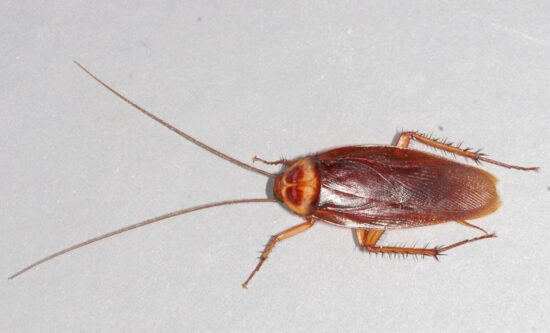Picture this: you’re grabbing a midnight snack when something dark and creepy scurries across your kitchen floor. Your heart skips a beat as you think “cockroach!” But before you panic and call an exterminator, take a deep breath. That little intruder might not be a roach at all.
Many homeowners deal with the same scary moment, only to find out they were looking at a completely different bug. The truth is, there are tons of bugs that look like cockroaches but aren’t actually roaches. Some are harmless, others might need attention, but they all require different approaches to handle.
Getting the identification right matters more than you might think. Treating a cricket problem the same way you’d handle cockroaches could waste time and money. Plus, some of these lookalikes are actually helpful bugs you want to keep around!
This guide will walk you through the most common bugs that look like a cockroach so you can figure out exactly what you’re dealing with. By the end, you’ll be a pro at telling these sneaky imposters apart from the real thing.
1. Water Bugs
Water bugs might be the most confusing cockroach lookalikes out there. These aquatic insects can grow up to 4 inches long, making them giants compared to most roaches. People often call Oriental cockroaches “water bugs,” but true water bugs are completely different creatures.
The easiest way to spot a water bug is by looking for their pincer-like front legs. These powerful grabbers help them catch fish, tadpoles, and other small prey. Unlike cockroaches, water bugs don’t have visible antennae, and their legs look like they’re built for swimming.
Water bugs live in ponds, lakes, and streams, but sometimes they fly toward outdoor lights and end up near houses. They can bite if you handle them (that’s why some people call them “toe biters”), which cockroaches rarely do. Their bodies are also more flattened and torpedo-shaped compared to the oval shape of roaches.
If you spot one indoors, it probably flew in by accident. These bugs prefer staying in water and won’t set up shop in your kitchen like cockroaches would.
- Starts killing roaches within hours and eliminates nests
- Lasts up to 12 months with child-resistant bait stations
- Easy to use, no mess or strong odors
- Targets roaches you see and the hidden ones too
2. Ground Beetles
Ground beetles often get mistaken for cockroaches because of their dark color and similar size. But once you know what to look for, they’re pretty easy to tell apart. The biggest giveaway is their super shiny, hard shell that looks almost metallic.
These beetles have a more rounded or football-shaped body compared to the flat, oval shape of cockroaches. Their antennae are also much shorter and thicker. While cockroaches have long, thin antennae that constantly move around, ground beetle antennae look stubby in comparison.
Ground beetles are actually the good guys in the bug world. They eat other pests like caterpillars, snails, and slugs, so finding them in your garden is usually a positive sign. They’re fast runners but prefer staying outside under rocks, logs, or in soil.
Unlike cockroaches that love hanging out in kitchens and bathrooms, ground beetles rarely come indoors. If you do find one inside, it probably wandered in by mistake and will be more interested in getting back outside than setting up camp in your home.
3. June Bugs
June bugs (also called May beetles) show up every late spring and early summer, bumping into porch lights and generally making a nuisance of themselves. These brown, chunky beetles do look similar to cockroaches at first glance, but they act completely different.
The biggest difference is how they move. While cockroaches are quick and sneaky, June bugs are total klutzes. They fly into walls, bump into lights, and generally seem to have no idea where they’re going. Their bodies are also rounder and more cylinder-shaped than the flat oval of a cockroach.
June bugs love light, which is the opposite of cockroaches. You’ll see them swarming around porch lights, street lamps, and lit windows. Cockroaches run away from bright lights as fast as they can.
These beetles also have shorter, sometimes feathery-looking antennae, and their wing covers fold neatly over their backs. They’re plant eaters that munch on tree leaves, not the garbage and food scraps that cockroaches prefer.
4. Crickets
Crickets are probably the most commonly confused bugs that look like a cockroach, especially the dark brown and black varieties. They’re about the same size as many roaches and have similar coloring, but there’s one dead giveaway: crickets can jump.
Their back legs are much larger and more muscular than cockroach legs, built specifically for those impressive hops. If you see a bug that suddenly launches itself across the room when you get close, you’re definitely looking at a cricket, not a cockroach.
Male crickets also make that famous chirping sound by rubbing their wings together. Cockroaches are silent creatures that prefer sneaking around without making noise. The cricket’s body is more cylindrical too, while cockroaches are flatter and more oval-shaped.
Most crickets prefer staying outside in gardens and grassy areas. They might occasionally wander indoors looking for moisture, but they don’t typically infest homes the way cockroaches do. They’re actually pretty harmless and mostly just want to find their way back outside.
5. Wood Boring Beetles
Several types of beetles attack wooden structures in homes, and homeowners sometimes mistake them for cockroaches. These wood-boring beetles are usually smaller than roaches and have harder, more rounded bodies.
The big difference is where you find them. While cockroaches hang out in kitchens, bathrooms, and anywhere there’s food, wood-boring beetles stick close to wooden furniture, floors, and structures. You might notice small holes in wood surfaces or tiny piles of sawdust where they’ve been munching.
Their antennae are much shorter than cockroach antennae, and their bodies feel more solid and shell-like when squished (not that anyone wants to test this method). These beetles can actually damage your home by eating through wooden beams and furniture, while cockroaches are more interested in contaminating your food.
If you’re finding small bugs near damaged wood rather than in your kitchen, you’re probably dealing with wood-boring beetles instead of roaches.
- Starts killing roaches within hours and eliminates nests
- Lasts up to 12 months with child-resistant bait stations
- Easy to use, no mess or strong odors
- Targets roaches you see and the hidden ones too
6. Stink Bugs
Brown marmorated stink bugs sometimes get confused with cockroaches because of their brownish color, but they have a very different body shape. Stink bugs look like little shields or triangles when viewed from above, while cockroaches are more oval.
The easiest way to tell them apart is the smell test, though you probably don’t want to get that close. Stink bugs release a terrible odor when threatened or squished, which is how they got their name. Cockroaches might smell bad, but they don’t deliberately spray stink as a defense mechanism.
Stink bugs also have a marbled or mottled brown pattern on their backs, while most cockroaches have more solid coloring. These bugs are plant feeders that sometimes sneak indoors during fall and winter looking for warm places to hide.
Unlike cockroaches that can live and breed indoors year-round, stink bugs are just temporary visitors trying to survive the cold weather. They’re more of a nuisance than a serious pest problem.
7. Palmetto Bugs
Here’s where things get tricky: palmetto bugs are actually a type of cockroach. But people in the southeastern United States often think of them as separate creatures because they’re so much bigger than common household roaches.
Palmetto bugs are usually American cockroaches that can grow up to 2 inches long. They have a reddish-brown color with a distinctive yellow figure-eight pattern behind their heads. Unlike smaller roaches that prefer staying indoors, palmetto bugs actually like living outside around palm trees and other vegetation.
These bugs can fly, which really freaks people out when they suddenly take to the air. Most other cockroach species either can’t fly well or prefer running. Palmetto bugs are also more likely to wander into houses from outside rather than establishing permanent indoor colonies.
Even though they’re technically cockroaches, palmetto bugs behave differently enough that many people consider them a separate category of pest. They’re still not something you want in your house, but they’re less likely to create the kind of persistent infestation that smaller roaches can cause.
8. Oriental Cockroaches
Oriental cockroaches cause a lot of confusion because people often call them “water bugs.” These are definitely real cockroaches, but they look and act different enough from other roach species that many folks think they’re dealing with something else entirely.
These roaches are much darker than other species, ranging from dark brown to almost black. They have a shiny appearance that makes them look wet or oily. The males have short, stubby wings, while females look almost wingless.
Oriental cockroaches love damp, cool places like basements, sewers, and areas around plumbing. This preference for moisture is why people started calling them water bugs. They’re also slower and clumsier than other cockroach species.
While these are true cockroaches that can infest homes, their different appearance and behavior often leads to misidentification. Knowing that your “water bugs” are actually roaches helps you choose the right treatment approach.
9. Bed Bugs
Bed bugs occasionally get mistaken for baby cockroaches, but they’re actually quite different when you look closely. The biggest difference is size: bed bugs are only about the size of an apple seed, much smaller than even young roaches.
Bed bugs have round, flat bodies that look almost like tiny buttons. When they’re full of blood, they become more reddish and swollen. Their antennae are much shorter than cockroach antennae, and their bodies are wider in proportion to their length.
Most importantly, bed bugs have completely different behavior. They hide in mattresses, furniture, and cracks near where people sleep. Cockroaches prefer kitchens, bathrooms, and areas with food sources. Bed bugs also only come out at night to feed on blood, while cockroaches are more general scavengers.
If you’re finding small, round bugs in or around beds and getting mysterious bite marks, you’re probably dealing with bed bugs rather than bugs that look like cockroaches.
10. Flying Termites
During termite swarming season (usually spring), homeowners sometimes mistake flying termites for cockroaches. These reproductive termites emerge from colonies to start new nests, and they can show up in large numbers that seem pretty alarming.
Flying termites have four wings that are all the same size, while cockroaches typically have different-sized front and back wings. Termite antennae are straight and beaded, not long and flexible like cockroach antennae. Their bodies are also softer and more fragile.
The timing can help with identification too. Termite swarms happen during specific seasons and weather conditions, usually after rain in spring. You’ll often find piles of discarded wings near windows and doors after a swarm passes through.
While flying termites aren’t as immediately gross as cockroaches, they can actually be more dangerous to your home since they eat wooden structures. If you’re seeing swarms of winged insects, especially near wooden areas of your house, termites might be the real problem.
- Starts killing roaches within hours and eliminates nests
- Lasts up to 12 months with child-resistant bait stations
- Easy to use, no mess or strong odors
- Targets roaches you see and the hidden ones too
Getting the ID Right Matters More Than You Think
Figuring out which bugs that look like a cockroach you’re actually dealing with isn’t just about satisfying curiosity. Different bugs need totally different approaches, and using the wrong treatment can waste time and money.
For example, spraying cockroach killer on crickets won’t solve a moisture problem that’s attracting them in the first place. Treating ground beetles like pests might get rid of helpful bugs that were actually eating other problem insects in your garden.
Some of these lookalikes, like water bugs and flying termites, might indicate bigger issues that need professional attention. Others, like crickets and ground beetles, might just need simple fixes like reducing moisture or sealing entry points.
The key identifying features to remember: cockroaches have long, thin antennae, flat oval bodies, and prefer dark spaces near food and water. Most bugs that look like cockroaches will differ in at least one of these major ways.
When in doubt, take a photo and consult with a pest control professional. They can help identify the exact species and recommend the best approach for your specific situation. Getting the identification right from the start saves everyone time, money, and frustration in the long run.



